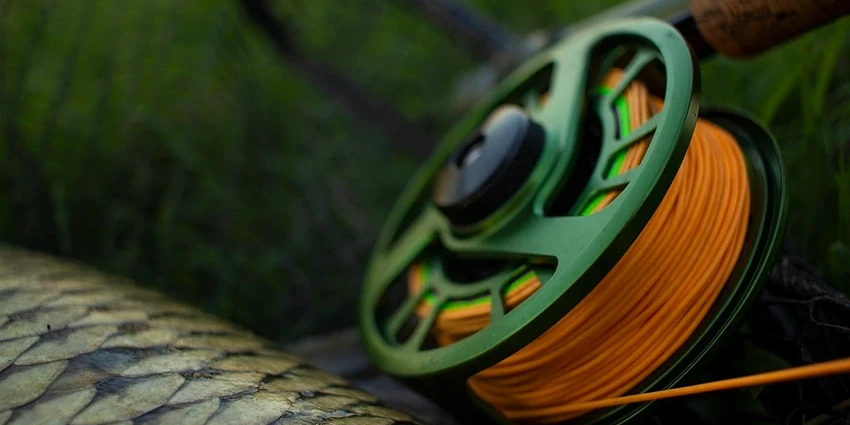All products were chosen independently by our editorial team. This review contains affiliate links and we may receive a commission for purchases made. Please read our affiliates FAQ page to find out more.
Bass fishing is more than just a leisure activity; it’s an adventure that combines skill, patience, and an appreciation for nature. However, like any outdoor activity, it comes with its own set of risks. This article delves into the essential safety techniques and practices that every angler should know to ensure a safe and enjoyable bass fishing experience.
Jump to:
Introduction to Bass Fishing Safety
Bass fishing, an activity enjoyed by many, requires more than just a rod and a reel. It demands an understanding of safety protocols to protect yourself, others, and the environment. Whether you’re a seasoned angler or new to the sport, being aware of safety measures is crucial.
Essential Safety Gear for Bass Fishing
Life Jackets: A Must-Have on the Water
- Importance: Prevents drowning, a life-saver in emergencies.
- Selection: Choose a comfortable, well-fitting life jacket.
First Aid Kits and Safety Tools
- Contents: Bandages, antiseptics, pain relievers, and specific medication if needed.
- Additional Tools: Multi-tools, flashlights, and emergency whistles.
Clothing for Protection
- Layers: Wear thin layers that can be adjusted according to the weather.
- Sun Protection: Use waterproof sunscreen with at least SPF 15.
Pre-Trip Safety Preparations
Checking Weather Conditions
- Sources: Check local weather forecasts and marine weather updates.
- Plan B: Always have an alternative plan in case of bad weather.
Informing Others of Your Plan
- Details to Share: Location, expected return time, and who is with you.
- Emergency Contacts: Ensure someone knows your whereabouts.
Equipment and Boat Safety Checks
- Boat Maintenance: Regular checks for leaks, engine health, and fuel levels.
- Fishing Gear: Inspect rods, reels, lines, and hooks for damage.
On-Water Safety Practices
Navigating Water Bodies Safely
- Awareness: Understand the water currents, depths, and potential hazards.
- Boating Skills: Know how to operate and maneuver your boat safely.
Handling Fishing Equipment with Care
- Sharp Tools: Store knives and hooks safely to prevent injuries. It’s also beneficial to have the best fillet knife for processing your catch safely and efficiently.
- Casting: Be aware of your surroundings to avoid accidents.
Dealing with Emergencies on Water
- Stay Calm: Panic can worsen situations.
- Emergency Procedures: Know basic first aid and how to signal for help.
Bass Fishing Techniques for Safe Angling
Choosing the Right Fishing Spot
- Research: Look for spots known for safety and good bass populations.
- Local Knowledge: Talk to local anglers for insights.
Safe Casting Techniques
- Practice: Ensure you’re comfortable with your casting technique.
- Awareness: Check for overhead lines or nearby people.
Handling and Releasing Bass Safely
- Grip: Learn the proper way to hold a bass to avoid injury to the fish.
- Release: Gently return the fish to the water.

Advanced Bass Fishing Techniques
Seasonal Bass Fishing Strategies
Spring and Fall Techniques
- Spring: Look for bass in shallow waters.
- Fall: Focus on areas with baitfish.
Summer and Winter Approaches
- Summer: Deeper waters are more productive.
- Winter: Slow down your approach; bass are less active.
Lure Selection and Safe Handling
- Types of Lures: Understand which lures work best in different seasons.
- Handling: Always be cautious when changing or handling lures.
Adapting Techniques for Different Water Bodies
- Lakes vs. Rivers: Techniques vary based on the water body.
- Local Regulations: Always adhere to local fishing regulations.
Register for our latest in-depth reviews and product round-ups from the experts
Enter your email address below to receive our twice monthly reviews emails.
By entering your details, you are agreeing to our terms and conditions and privacy policy. You can unsubscribe at any time.
Bass Fishing Etiquette and Conservation
Respecting Other Anglers and Nature
- Space: Maintain a respectful distance from other anglers.
- Environment: Practice catch and release to conserve bass populations.
Conservation Practices in Bass Fishing
- Sustainable Practices: Follow guidelines for sustainable fishing.
- Habitat Protection: Be mindful of the environment and avoid damaging habitats.
Advanced Bass Fishing Techniques
Seasonal Bass Fishing Strategies
Spring and Fall Techniques
- Spring: Focus on shallow waters as bass move closer to spawn.
- Fall: Target areas with abundant baitfish as bass prepare for winter.
Summer and Winter Approaches
- Summer: Explore deeper waters where bass seek cooler temperatures.
- Winter: Slow down your techniques; bass are less active in cold water.
Lure Selection and Safe Handling
- Types of Lures: Choose lures based on the season and bass behavior.
- Handling: Be cautious when changing or handling sharp lures.
Adapting Techniques for Different Water Bodies
- Lakes vs. Rivers: Techniques vary; rivers may require more attention to current.
- Local Regulations: Always adhere to local fishing regulations for sustainability.
Bass Fishing Etiquette and Conservation
Respecting Other Anglers and Nature
- Space: Maintain a respectful distance from other anglers.
- Environment: Practice catch and release to conserve bass populations.
Conservation Practices in Bass Fishing
- Sustainable Practices: Follow guidelines for sustainable fishing.
- Habitat Protection: Be mindful of the environment and avoid damaging habitats.
FAQs on Bass Fishing Safety Techniques
- Always wear a life jacket, especially when fishing from a boat.
- Be aware of the weather and water conditions.
- Handle equipment safely and responsibly.
- Adverse weather can create dangerous conditions on the water.
- High winds and storms increase the risk of accidents.
- Use a firm yet gentle grip.
- Avoid touching the gills and eyes.
Life jackets, first aid kits, appropriate clothing, and sun protection.
Check your equipment, inform someone about your trip, and monitor the weather.







